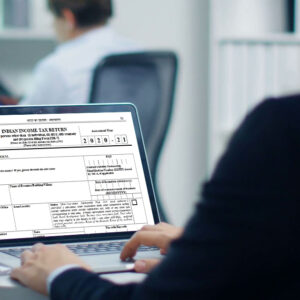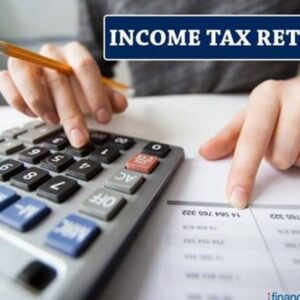Form 16 Issuance
₹200.00 – ₹300.00
For businesses having 1 – 25 employees. Includes TDS Filing for Q4 with Annexure II, Form 16 issuance and ITR-1 filing for employees.
Description
Form 16 Issuance to Employees
Form 16 is a certificate that employers issue to their employees. It is a validation that the TDS has been deducted and deposited with the government authorities on behalf of the employee of the organization.
Form 16 gives a detailed summary of the salary paid to the employees and the deducted TDS. TDS Form 16 contains all the information that an individual needs to prepare and file the income tax return.
The employers are required to issue a Salary TDS certificate every year on or before the 15th of June of the coming year immediately after the financial year in which the tax is deducted. There are two components of Form 16 Part A and Part B. If an individual loses Form 16 he can request a duplicate Form from the employer.
IndiaFilings can help you manage TDS compliance online. Our TDS experts will help you file all the TDS returns pay any overdue TDS deposits and also the issuance of Form 16 to the employees.
Structure of Form 16
Part A of Form 16
It provides the details of the TDS that is deducted and deposited. This form can be generated by the employers through the TRACES portal.
The employer must verify the contents before issuing the certificate. Here are a few components of Part A of the salary TDS certificate.
- Name and address of the employer
- TAN and PAN of employer
- PAN of the employee
- Summary of tax deducted and deposited quarterly, which is certified by the employer.
Part B of Form 16
It is an annexure to Part A, Part B is prepared by the employer for its employees and it contains details of the breakup of the salary deductions approved under Chapter VI-A. In case of a job change in one financial year, Form 16 should be obtained by both employers. Some of the components of Part B are:
- Detailed breakup of salary
- Detailed breakup of exempted allowances under Section 10
- Deductions that are allowed under Income Tax Act (Under Chapter VIA)
Here is the list of deductions
- Deduction for life insurance premium paid, contribution to PPF, etc. under Section 80C
- Deduction for contribution to pension funds under Section 80CC
- Deduction for employee’s contribution to a pension scheme under Section 80CCD(1)
- Deduction for taxpayer’s self contribution to a notified pension scheme under Section 80CCD(1B)
- Deduction for employer’s contribution to a pension scheme under Section 80CCD(2)
- Deduction for health insurance premium paid under Section 80D
- Deduction for interest paid on loan taken for higher education under Section 80E
- Deduction for donations made under Section 80G
- Deduction for interest income on savings account under Section 80TTA
TDS on Salary
TDS is calculated on the income tax rates that are prescribed for the financial year in which the payment of the employee is made. An individual responsible for paying the taxes can increase or decrease the amount that is deducted based on any adjustments in the previous deficiency or excess deduction.
The total amount of the TDs will be determined by the following elements:
| Exemption Limit | Leave Encashment | Notified Allowances |
| House rate allowance | Perquisites | Donation by employees under 80G |
| Other deductions | Bonus or incentives | Estimated Salary |
If an individual is employed by more than one employer during a financial year then tax will be deducted on the aggregate salary by one of the employers as chosen by the employee by submitting information in Form 12B.
Thus if an employee has more than one employer in a financial year then he is required to furnish information in Form 12 B to one of the employers. Once Form 12B is submitted it becomes an obligation for the employer to deduct TDS.
Deposit of Tax to Government by Employers
The deducted tax from the employees’ salary should be deposited by the employer along with an income tax challan ITNS 281 on or before the 7th of every month for the previous month.
Recently, from 2008 all the corporate assessees and assessees are subject to tax audit are required to make all the TDS payment online through an internet banking facility.
An assessee can also make payment of taxes from the account of any other person. However, the challan for making should indicate the PAN of the assessee on whose behalf the payment is made.
Procedure to file ITR 7 returns
How to file ITR 7 returns?
ITR 7 can be filed with the Income Tax Department in the following ways:
- By furnishing the returns in the electronic manner using the digital signature certificate
- By transmitting the data in the return and thereafter submitting the verification of the return in the ITR V Return Form
After filing the return the assessee is required to print the copies of the ITR V Form. A copy of the ITR V which is duly signed by the assessee has to be sent by the ordinary post to
Bag No.1, Electronic City Office, Bengaluru – 560100 ( Karnataka)
The other copy can be retained by the assessee for his record.
How to fill the verification document?
The required information is to be filled in the verification document. Strikeout whatever is not applicable. Pleasure ensures that the verification has been signed before the returns are furnished. Choose the designation/ capacity of the person signing the return.
It is to be noted that any person who is making a false statement in return or accompanying the schedules should be liable to be prosecuted under the section which can lead to imprisonment and also a fine.
E filing audit reports
If the assessee is liable for auditing u/s 44AB and the accounts have been audited by the accountant then the details of such audit reports along with the furnishing date are to be sent to the income tax department. It is to be under the head “Audit Information”
No annexures required
No documents are to be attached with this return while filing ITR 7 Form.
The Taxpayers should match the taxes that are deducted/ collected paid by or on behalf of them with their Tax Credit statement form 26AS.
Due Date for Filing TDS Returns by Employers
TDS return must be filed with the Government every quarter as follows:
| Quarter | The due date for filing TDS return |
|---|---|
| April- May – June | July 31st |
| July- August- September | October 31st |
| October – November – March | January 31st |
| January – February – March | May 31st |
Annexure-II of TDS Return in May 31st
In the TDS return filed by employers on May 31st, various details about the employee must be furnished by the employer along with details of TDS deducted and deposited. Annexure-II of the TDS return has various data-points and must be prepared carefully by the HR and Accountant of the business.
Issuance of Form 16 to Employees
After the TDS returns are filed by the employer, the Government would issue TDS certificates to the employer – which in turn is provided to the employees.
Form 16A provides details about TDS from salary. Form 16B provides details of TDS Other than salary, Form 16C for TDS under Section 194-IB, Form 16A for TDS from other than salary, and Form 27D for TCS.
The due date for issuance of Form 16 is on or before June 15th of the financial year immediately following the financial year in which the tax is deducted. In the case of Form 16A, the same should be issued every quarter.
Additional information
| Price | Basic, Standard, Premium |
|---|
Related products
-
- -24%
- Income tax
ITR-3 Return Filing
- ₹2,211.00 – ₹7,550.00
- Select options This product has multiple variants. The options may be chosen on the product page
Add to WishlistAdd to Wishlist -
- -24%
- Income tax
ITR-5 Return Filing
- ₹7,550.00 – ₹10,601.00
- Select options This product has multiple variants. The options may be chosen on the product page
Add to WishlistAdd to Wishlist -
- -24%
- Income tax
ITR-4 Return Filing
- ₹2,211.00 – ₹7,550.00
- Select options This product has multiple variants. The options may be chosen on the product page
Add to WishlistAdd to Wishlist -
- -24%
- Income tax
ITR-6 Return Filing
- ₹7,550.00 – ₹15,341.00
- Select options This product has multiple variants. The options may be chosen on the product page
Add to WishlistAdd to Wishlist







Reviews
There are no reviews yet.